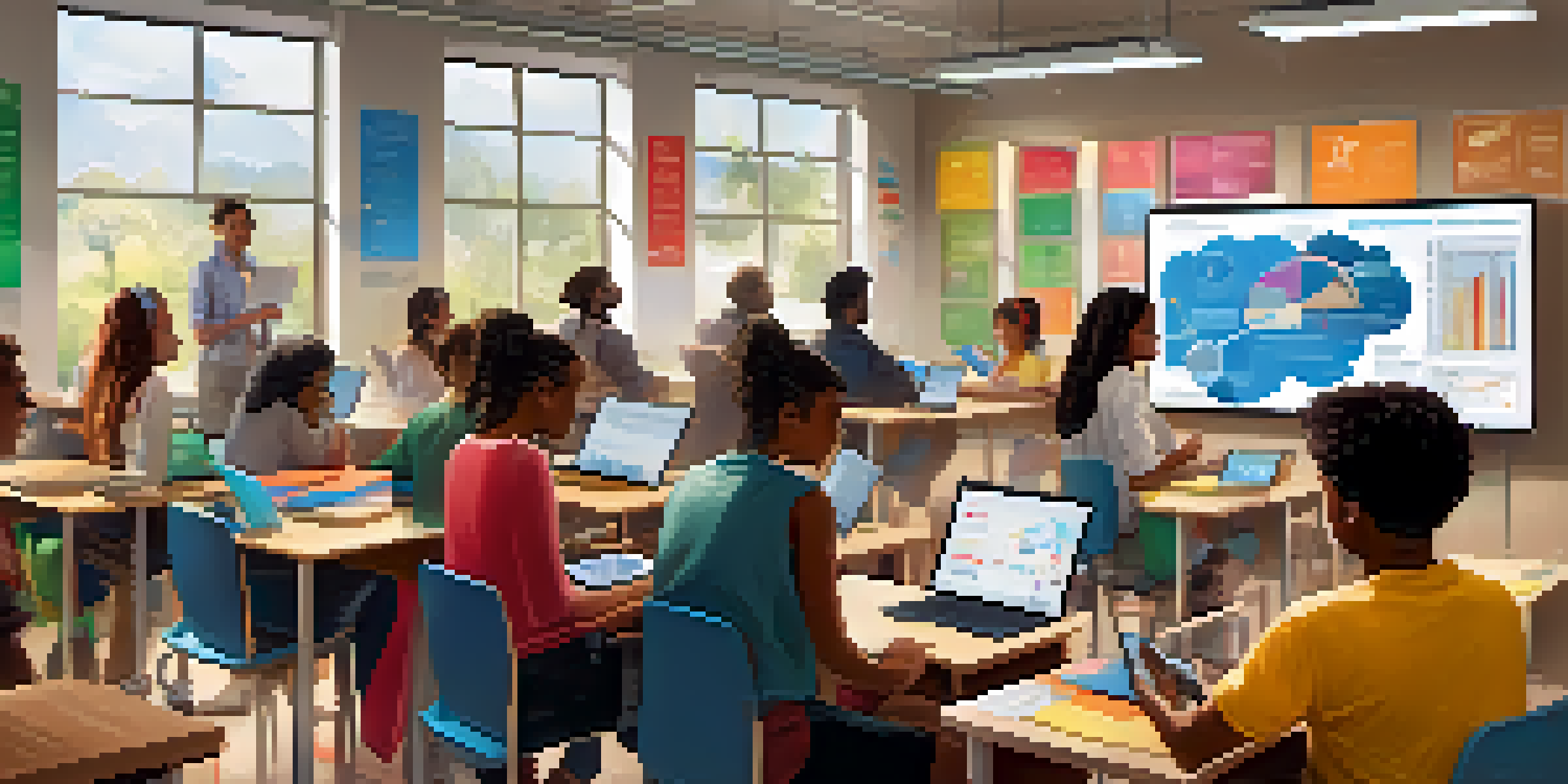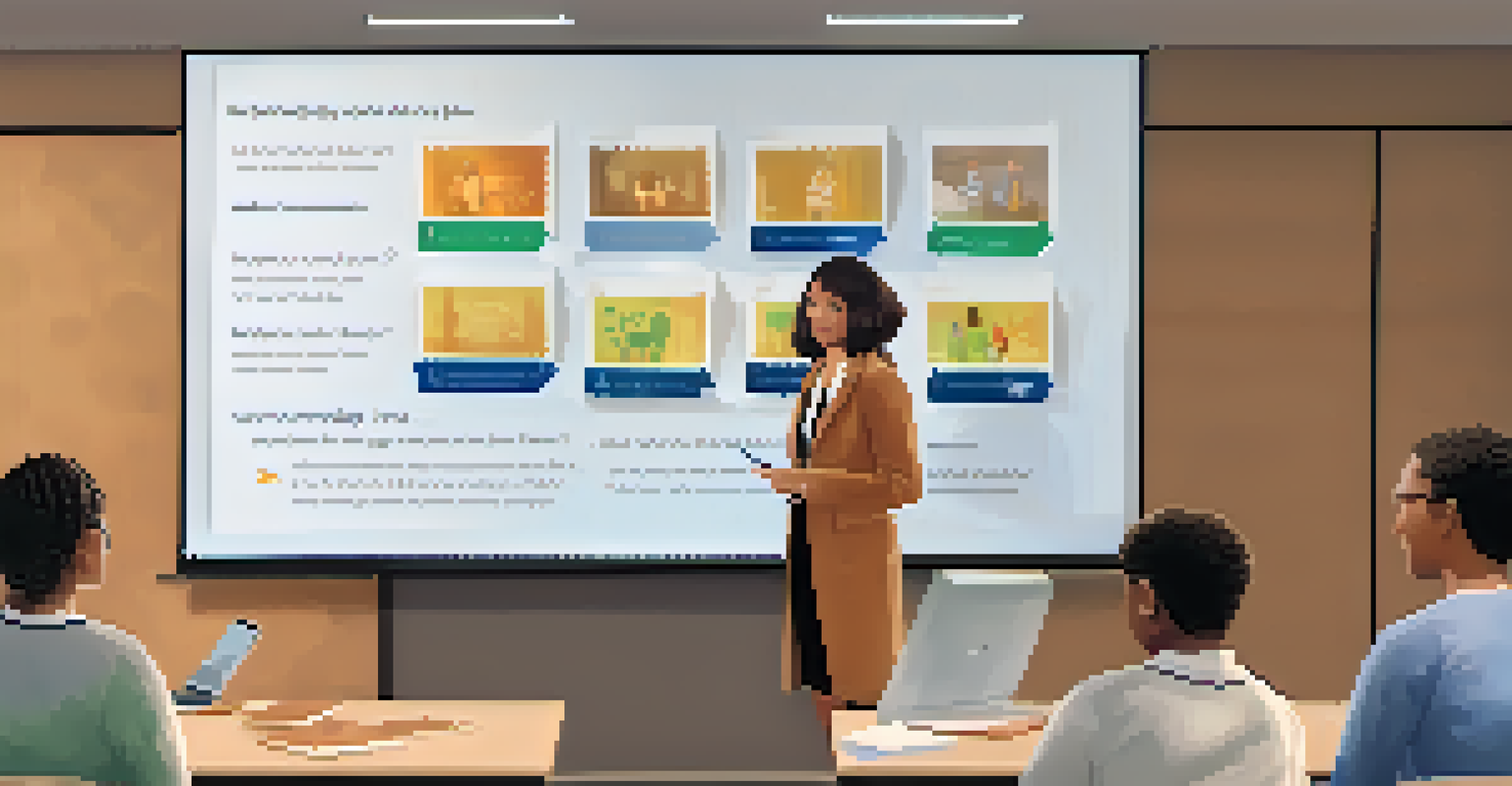Understanding Learning Styles in Blended Learning Approaches

What Are Learning Styles and Why Do They Matter?
Learning styles refer to the preferred ways individuals absorb, process, and retain information. Understanding these styles is crucial in education, particularly in blended learning environments that combine traditional and online methods. By recognizing different learning styles, educators can tailor their approaches to meet the diverse needs of their students, ultimately enhancing engagement and comprehension.
People learn in different ways, and the key to effective teaching is to recognize that diversity and adapt teaching methods accordingly.
For instance, a visual learner might benefit from infographics and videos, while an auditory learner may thrive with podcasts or discussions. By integrating various resources, teachers can address each student's unique preferences. This not only helps in better understanding of the material but also fosters a more inclusive learning atmosphere.
In blended learning, where students might switch between online and face-to-face interactions, accommodating different learning styles becomes even more vital. When students feel their needs are being met, they are more likely to participate actively and achieve better outcomes.
Types of Learning Styles: An Overview
There are several commonly recognized learning styles, including visual, auditory, reading/writing, and kinesthetic. Visual learners prefer to see information through images, diagrams, and charts, while auditory learners benefit from listening and discussing concepts. Reading/writing learners engage best with text, and kinesthetic learners grasp concepts through hands-on activities.

Understanding these styles allows educators to create a diverse learning environment. For example, a blended learning course might incorporate video lectures for visual learners, podcasts for auditory learners, and interactive simulations for kinesthetic learners. This variety keeps students engaged and caters to their preferred learning methods.
Understanding Learning Styles
Recognizing different learning styles enhances engagement and comprehension in blended learning environments.
Moreover, recognizing these styles can help educators identify potential challenges. For instance, a student who struggles with traditional reading assignments may find it hard to keep up in a blended setting focused heavily on text. By being aware of these differences, instructors can provide targeted support.
The Role of Technology in Supporting Learning Styles
Technology plays a pivotal role in accommodating various learning styles in blended learning. Tools like learning management systems (LMS) can offer diverse content formats, ensuring that all students have access to materials that resonate with their preferences. For example, an LMS might allow students to choose between watching a video, reading a transcript, or engaging in a discussion forum.
The best way to predict the future is to create it.
Moreover, technology enables personalized learning experiences. Adaptive learning platforms can analyze a student's interactions and adjust content delivery based on their preferences. This not only helps in catering to individual learning styles but also fosters a sense of ownership over their learning journey.
As a result, students feel more empowered and motivated when they can choose how they learn. When technology is effectively integrated, it enhances the blended learning experience by making it more interactive and aligned with students' needs.
Creating a Blended Learning Environment
Designing a blended learning environment requires careful planning to ensure all learning styles are considered. Educators should begin by assessing the learning preferences of their students, which can be done through surveys or informal assessments. This initial step allows instructors to tailor their resources and activities accordingly.
Once the learning styles are identified, instructors can mix different teaching methods and materials. For instance, live webinars can be paired with recorded sessions for visual learners, while group discussions can enhance understanding for auditory learners. By blending these approaches, educators can create a dynamic learning experience.
Technology Supports Diverse Learning
Adaptive learning platforms and LMS tools provide personalized content that caters to various learning preferences.
Additionally, fostering a supportive community within the blended learning environment is essential. Encouraging collaboration and communication among students helps them feel more connected, regardless of their learning style. This sense of belonging enhances motivation and ultimately leads to better learning outcomes.
Assessing Learning Styles in Blended Learning
Assessment is a crucial component of understanding how well different learning styles are being catered to in a blended learning approach. Continuous feedback from students can provide insights into what methods are working and which aren’t. This feedback loop helps educators refine their strategies and adapt to changing student needs.
For instance, educators might use quizzes or reflective journals to gauge student understanding and engagement. Analyzing this data allows instructors to identify trends, such as a group of students struggling with a particular learning method. Armed with this information, adjustments can be made to better align with learning styles.
Moreover, formative assessments can be designed with various formats to suit different preferences. By offering options like presentations, written reports, or practical demonstrations, students can showcase their strengths and understanding, leading to a more equitable assessment process.
Challenges of Integrating Learning Styles in Blended Learning
While integrating learning styles into blended learning offers many benefits, it also presents challenges. One of the main hurdles is the misconception that individuals strictly fit into a single learning style. In reality, most people exhibit a blend of styles, and rigid categorization can limit the teaching approach.
Another challenge is the resource-intensive nature of catering to multiple learning styles. Educators may find it difficult to create diverse content that meets the needs of all learners within a constrained timeframe or budget. This can lead to frustration and a sense of overwhelm.
Future Trends in Education
Advancements in AI and a focus on social-emotional learning will shape the future of blended learning approaches.
Despite these challenges, it’s essential for educators to remain flexible and open-minded. By starting small and gradually incorporating various strategies, they can create a more inclusive environment without feeling overwhelmed. Small adjustments can lead to significant improvements in student engagement and success.
Future Trends in Learning Styles and Blended Learning
As education continues to evolve, so too will our understanding of learning styles and their integration into blended learning environments. Advances in technology, such as artificial intelligence (AI), are paving the way for more personalized learning experiences. AI can analyze student performance and preferences in real-time, tailoring content to suit individual needs.
Additionally, there is a growing emphasis on social and emotional learning (SEL), which recognizes the importance of addressing students' emotional and social needs alongside their academic ones. This holistic approach acknowledges that learning styles are not just about how information is presented but also how students feel about their learning experience.

Ultimately, the future of blended learning will likely involve a more nuanced understanding of learning styles, incorporating diverse approaches that reflect individual strengths and preferences. By embracing these trends and remaining adaptable, educators can create enriching learning experiences that resonate with all students.